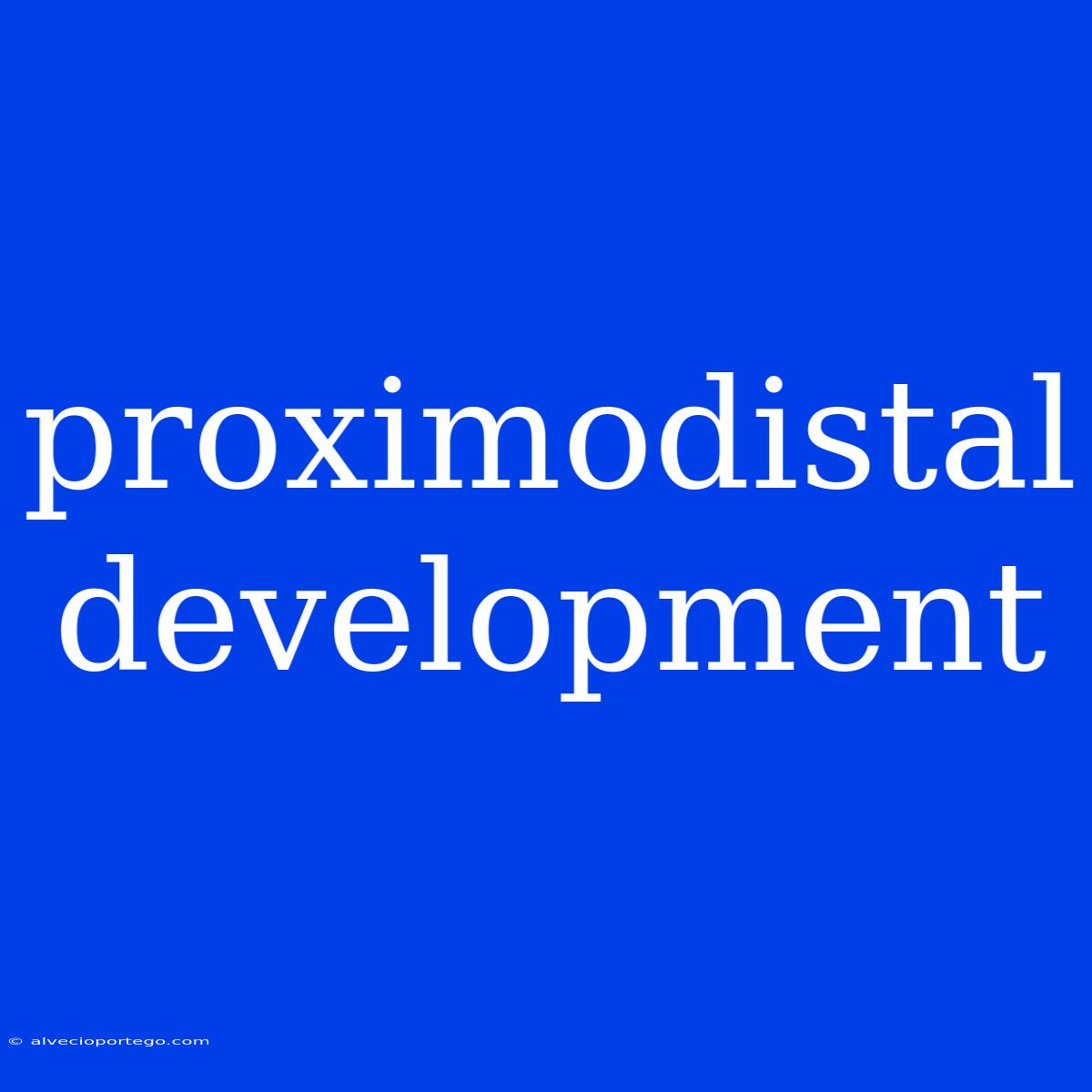Proximodistal Development: From the Inside Out
Proximodistal development is a fundamental principle in child development that describes the pattern of growth and development that proceeds from the center of the body outwards. This means that a child's trunk and core muscles develop first, followed by the arms and legs, and finally the fingers and toes.
Understanding the Concept
Think of a tree. The roots grow first, providing a strong foundation for the trunk to emerge. Then branches extend outward, and finally leaves sprout from the tips of the branches. Proximodistal development operates similarly in children:
- Early development: Infants gain control over their torso and arms before their hands and fingers. They learn to roll over, sit up, and reach for objects using their whole arm before they can grasp small objects with their fingers.
- Later development: As children grow, they refine their motor skills. They learn to use their hands to manipulate objects with greater precision, and their fine motor skills develop further. This allows them to perform tasks like drawing, writing, and playing musical instruments.
Examples of Proximodistal Development
Here are some examples of how proximodistal development manifests in children:
- Infancy: A baby's first movements involve the whole body, like waving arms and kicking legs. As they develop, they gain control over individual limbs and learn to reach and grasp.
- Toddlerhood: Toddlers begin to walk by first learning to balance their bodies and then coordinating their legs. They can also start scribbling with their whole hand before learning to hold a pencil correctly.
- Preschool and beyond: Children learn to use tools, build with blocks, and tie their shoes, all requiring precise motor control of their hands and fingers.
Importance of Proximodistal Development
Proximodistal development is important for several reasons:
- Motor skills: It allows children to develop the motor skills necessary for daily activities, from feeding themselves to playing games.
- Cognitive development: As children gain control over their bodies, they can explore their environment more effectively and learn about cause and effect.
- Social development: The ability to use hands and fingers with dexterity enhances children's interactions with others, including playing with peers and using tools for creative expression.
Supporting Proximodistal Development
Parents and caregivers can support proximodistal development in children by:
- Providing opportunities for movement: Encourage crawling, climbing, and playing active games.
- Offering age-appropriate toys: Provide toys that engage both gross and fine motor skills, such as balls, blocks, and puzzles.
- Encouraging exploration and play: Let children experiment and learn through play, providing the necessary stimulation for their motor development.
- Being patient and supportive: Remember that development takes time. Encourage children to try new things, but avoid forcing them before they are ready.
Proximodistal development is a fascinating aspect of child development. By understanding this principle, we can better support children's growth and development, allowing them to reach their full potential.

